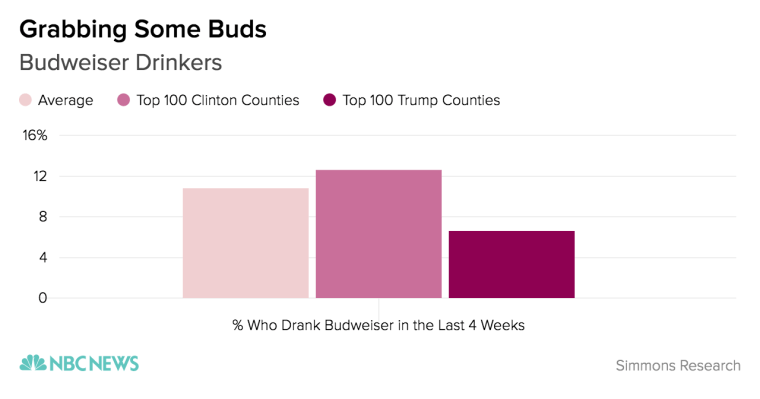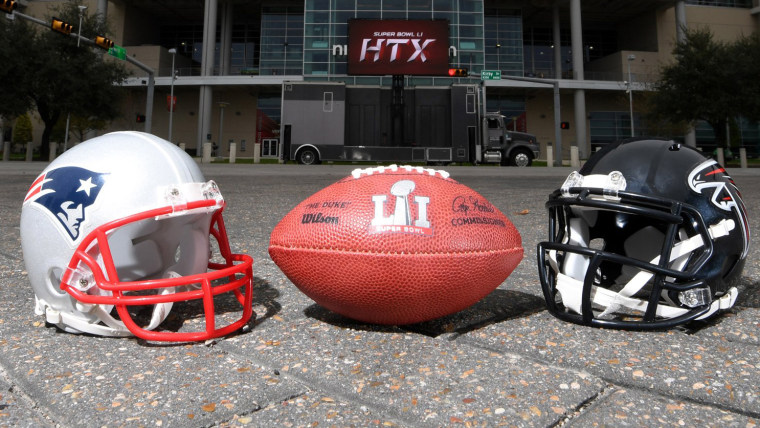In a country that has been segmented and niched in more ways than you can count, the Super Bowl has largely proven to be an exception – an event that unites. But this Sunday politics seems ready to muscle its way into the big game in a big way.
From the field to the halftime show to the television ads, the red/blue divide that has dominated the news in the last few months looks like it will be on display, like it or not.
The Super Bowl’s power as a moment when the American people come together is impossible to ignore. Entertainment options have grown dramatically in the last decade, but Super Bowl viewership has climbed. In 2006, 91 million Americans watched the game. In 2016 the figure was 111 million, a 22% increase.
When an audience gets that big, other issues, such as politics, tend to intrude. Consider 1992, when immediately after the Super Bowl candidate Bill Clinton and his wife Hillary appeared on 60 Minutes to refute claims than Clinton had an affair with former TV newswoman Gennifer Flowers.
But 2017 is on a different level. The game itself has taken on a political dimension and the big difference, of course, is the divisive political climate around President Donald Trump.
This week New England Patriots Quarterback Tom Brady was asked repeatedly about his support of Trump (a red Make America Great Again hat was seen in his locker this fall). He refused to wade into the topic, but analysts noted that Patriots coach Bill Belichick and owner Robert Kraft are also known for being Trump fans. At the same time New England Patriots Tight End Martellus Bennett said he would likely skip a trip to the White House if his team wins on Sunday because of Trump.
In addition don’t forget that the Patriots’ opponent, the Falcons, come from a city, Atlanta, that Trump tweeted was “falling apart” when he fired back a response at Georgia Rep. John Lewis. That’s led some to view the story behind Sunday’s game as Atlanta versus Trump.
And those looking for a respite from the game’s politics will find no quarter during commercials or halftime.
Much attention has already been paid to this year’s Super Bowl ad from Budweiser that shows Anheuser-Busch co-founder Adolphus Busch arriving in the United States as an immigrant because he wants to “brew a beer.” Critics on the right have called the ad pro-immigration and depending on where you live, the commercial could affect what’s in your party cooler – or speed up Bud consumption.
Data from Simmons Research suggest Bud drinkers have a leftward lean. People living in the 100 counties that gave Hillary Clinton her largest margins reported they were more likely than average to have drank a Budweiser in the last four weeks. People living in Trump’s top 100 counties were less likely.

Budweiser may well know about those divides and figure any political fallout from the ad is a net-plus for them. (Those top Clinton Counties are generally urban centers with much larger populations, meaning more potential Bud customers.) But the commercial still hits at a core question for well-known brands during the Trump presidency: How do companies handle a divisive president in a world where brand and political loyalties may be in conflict?
That’s an important issue for national brands such as Budweiser and more personal brands, like that of Tom Brady or musical performers such as Lady Gaga – which brings us to this year’s Super Bowl halftime show.
Gaga was announced as the Super Bowl LI halftime performer months ago, but her support for Hillary Clinton and disdain for Trump is well documented. And the NFL has reportedly told her she is free to talk about Trump if she wishes.
That leaves Lady Gaga with an opportunity if she wants to use it. Data from Hitwise, a division of Connexity, an audience research firm, show that her audience is politically quite liberal.
People who identify as “very liberal” were 32% more likely than average to search for Lady Gaga online or visit her website over the last four weeks. People who identify as “very conservative” were 30% less likely to search for her or visit her site.
In other words, it might be in Mother Monster’s interest to be political at halftime. Her fans would likely be behind her, even if the TV audience and game crowd were not. And it’s the fans that buy records and stream music.
Of course, all of this – the politics on the field, during the ads, at halftime – not only affects viewers at home, it ultimately reflects on the big brand on display Sunday, the National Football League.
As a nationally focused entertainment organization, the NFL wants to keep as many people happy as possible. All things being equal, it wants to play to the middle. The flurry of politics around Super Bowl LI shows how difficult that may be in 2017.
